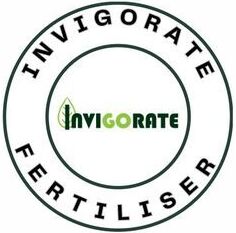
Turning Your Garden into a Sanctuary: A Guide to Successful and Sustainable Gardening
In a world where environmental consciousness is on the rise, many individuals are turning to sustainable practices in various aspects of their lives, including gardening. A garden is not just a patch of greenery; it’s an opportunity to create a sanctuary that not only enhances your surroundings but also contributes positively to the environment. In this guide, we will explore what a successful garden looks like and how you can achieve this by embracing sustainable agriculture practices.
What Does a Successful Garden Look Like?
A successful garden is not merely about the abundance of plants but also about fostering a thriving ecosystem. Here are some key features that define a successful garden:
- Biodiversity: A successful garden is a haven for a variety of plants, insects, birds, and other wildlife. Biodiversity is crucial for the health of your garden as it creates a balanced ecosystem where different species support each other.
- Healthy Soil: The foundation of any successful garden lies in its soil. Healthy soil is teeming with beneficial microorganisms, providing essential nutrients to plants. Avoiding the use of synthetic fertilizers and opting for organic alternatives helps maintain soil health in the long run.
- Water Conservation: A sustainable garden uses water efficiently. Implementing practices like mulching, drip irrigation, and collecting rainwater can significantly reduce water consumption while keeping your garden lush and vibrant.
- Natural Pest Control: Instead of relying on chemical pesticides, a successful garden employs natural pest control methods. This includes companion planting, introducing beneficial insects, and cultivating plants that repel pests, creating a harmonious balance within the ecosystem.
- Composting: Successful gardens embrace the cycle of life, and composting is a key aspect of this. By recycling kitchen and garden waste into nutrient-rich compost, you not only reduce waste but also enhance the fertility of your soil in a sustainable manner.
- Seasonal Adaptability: A thriving garden changes with the seasons. Planting a diverse range of species that are well-suited to your local climate ensures that your garden remains vibrant throughout the year.
How to Achieve a Successful Garden: Sustainable Agriculture Practices
Now that we understand the elements of a successful garden, let’s delve into the sustainable agriculture practices that can help you achieve this:
- Plan and Design: Begin by carefully planning and designing your garden. Consider the layout, the types of plants you want to include, and how they will interact with each other. This thoughtful approach ensures that your garden is not only aesthetically pleasing but also functional and sustainable.
- Choose Native Plants: Opt for native plants that are well-adapted to your local climate and soil conditions. Native plants are more likely to thrive, requiring less water, fertilizer, and maintenance. They also provide essential habitat for local wildlife.
- Water Wisely: Install a drip irrigation system to deliver water directly to the roots of your plants, minimizing water wastage. Collect rainwater in barrels and use it during dry periods. Mulching around plants helps retain moisture and suppress weeds.
- Composting: Start a composting system to recycle kitchen scraps, yard waste, and other organic materials. Compost enriches the soil with nutrients, improves its structure, and enhances its water-retaining capacity.
- Integrated Pest Management (IPM): Embrace an integrated approach to pest management by encouraging natural predators, planting pest-resistant varieties, and using physical barriers like row covers. This reduces the need for chemical pesticides, preserving the overall health of your garden.
- Organic Fertilizers: Choose organic fertilizers or create your own compost-based fertilizers to nourish your plants. Avoid synthetic fertilizers that can harm the soil and disrupt the balance of the ecosystem.
- Wildlife-Friendly Features: Enhance biodiversity by incorporating wildlife-friendly features such as bird feeders, bee-friendly plants, and water sources. These elements attract beneficial insects and birds that contribute to the ecological balance of your garden.
- Rotate Crops: Practice crop rotation to prevent soil-borne diseases and pests. This involves changing the location of crops each season, ensuring a healthy and fertile soil environment for different plants.
By implementing these sustainable agriculture practices, you can turn your garden into a sanctuary that not only flourishes aesthetically but also plays a crucial role in supporting local ecosystems and promoting environmental health. Embrace the principles of biodiversity, soil health, and resource efficiency, and watch your garden thrive as a sustainable haven in harmony with nature.

